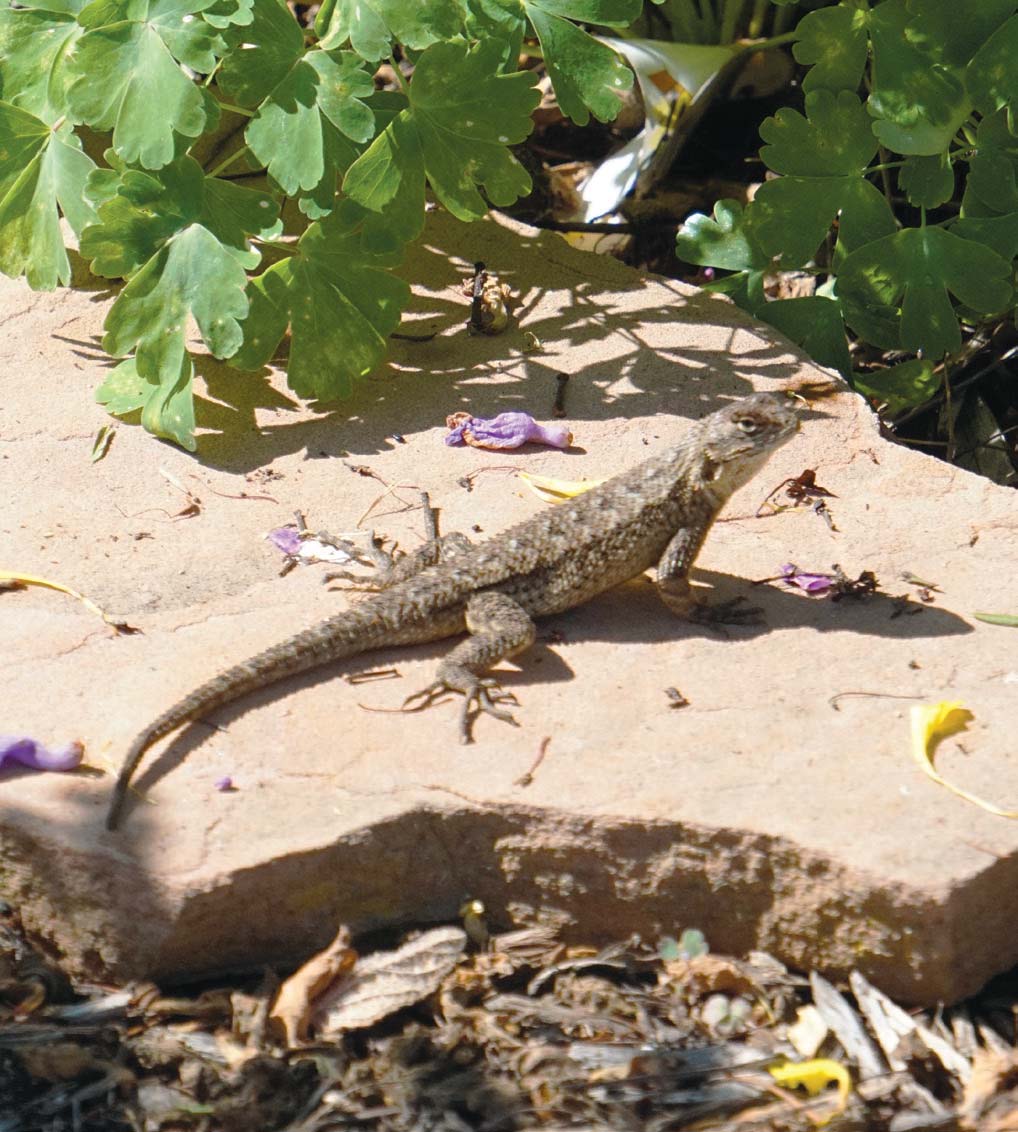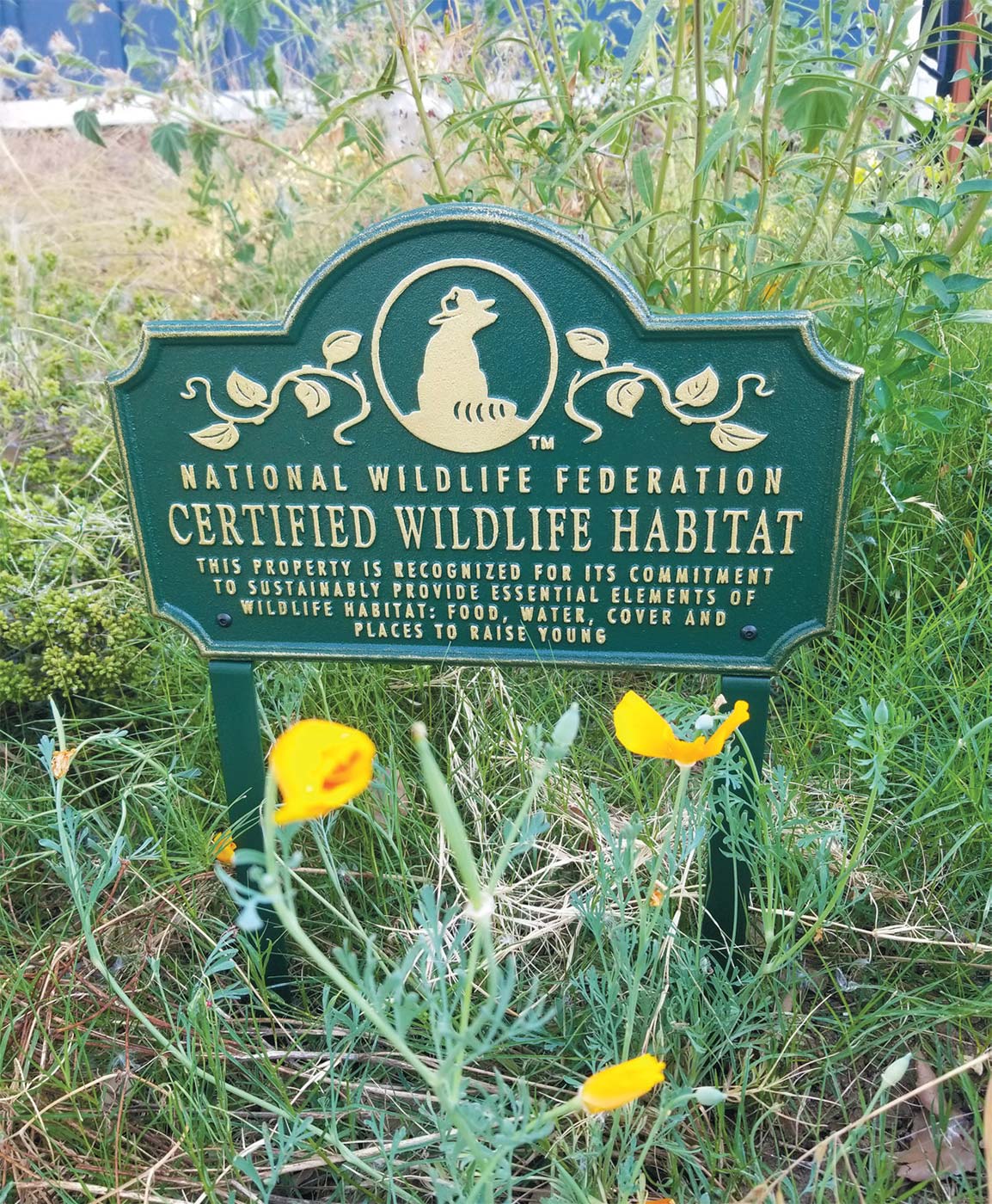Certifiable: Make Your Urban Garden a Wildlife Sanctuary
When I told my best friend that I had gotten my yard certified as a wildlife sanctuary, she laughed. “Of course you did.” Her yard would qualify, too, but she doesn’t get as excited about rewilding and permaculture gardening as I do. One question she had for me stuck out, though: “What do you get out of certifying? Other than your obvious glee.”
I didn’t have a complete answer, so I looked it up. Turns out, it isn’t what I am getting out of it so much as helping to educate others about what we can do for the wildlife in our area.
According to the California Department of Fish and Wildlife, California is considered a “global ‘hot spot’ of biodiversity” due in part to its varied geography. But we also have the most threatened species out of all the states, due in part to habitat loss, invasive species and climate change.
“The number one threat to wildlife worldwide is a loss of habitat,” says Beth Pratt, California regional executive director for the National Wildlife Federation and leader of the #SaveLACougars campaign. “We have destroyed so much of their habitat with human development, they are running out of options.”
Mountain lions are just one of the species losing ground. Cougar P-22 (puma 22) was a young cat that gained celebrity by crossing two major freeways—the 101 and 405—and then lived his last 10 years in the relatively tiny range of Griffith Park. His life, and death in 2022, inspired the Wallis Annenberg Wildlife Crossing currently being built over the 101 freeway at Liberty Canyon in Agoura Hills.
“The fees for the Certified Wildlife Habitat through the National Wildlife Federation do not go directly to the Wallis Annenberg Wildlife Crossing/#SaveLACougars campaign,” says Pratt. “But since those are both projects of the National Wildlife Federation, they still help support our work on the wildlife crossing indirectly.”
Converting your yard—or a portion of your business or school site—to native plants and creating habitats for wildlife is a process. It took me 10 years of slow changes to fully convert 2,500 square feet to be certifiable, but it can also be done in a matter of weeks or months.
“Wildlife-friendly gardens not only benefit the animals, but also people. Native plants can help with water conservation and fire-resistant landscaping, and tree coverage with carbon sequestration and reducing noise and light pollution,” says Pratt. “And studies have shown that adding gardens to your home can also benefit your physical and mental health.”

Photos by Carol Gravelle

Photo by Tami Chu
NATIONAL WILDLIFE SANCTUARY
CERTIFICATION: For single site only
www.nwf.org/Garden-for-Wildlife/Certify
$20/Sign available for purchase for $30 or plaque $99 For Camarillo resident Carol Gravelle, converting her yard was the right thing to do. “I’ve done habitat restoration on the Channel Islands and learned what a crucial role we each can play in supporting wildlife and ecosystems,” she says. “Since taking out our front grass and planting mostly California native plants, the garden teems with life!”
It is a very simple process and relatively inexpensive to become certified. It is self-reported, but should include the following:
Food: This could be nectar plants, fruit trees or bushes or vegetable plants. It could also be bird and hummingbird feeders.
Water: Butterfly bubblers, bird baths or a fountain could all work here.
Cover/shelter: Bushes and thickets, trees for roosting and nesting, bird or bat boxes, carpenter bee houses, etc.
Sustainable practices: Water conservation, planting noninvasive natives, creating swales or other water-saving methods like rain barrels and no herbicides or pesticide use.
“Certifying the garden and displaying the sign suggests to passersby an alternative to a traditional lawn,” says Gravelle, “and another reason to consider it beyond the more obvious water-saving aspects.”
MONARCH WAY STATION:
For home or business
www.MonarchWatch.org/waystations
$18/$18 for sign
“Simple steps like installing a bird bath or planting native plants can make an enormous difference to the wild world,” says Pratt. “Build it and they certainly will come! For a monarch butterfly, for example, the milkweed in your backyard, a fuel stop, may make all the difference in whether they can survive their annual migration.”
Your habitat/way station should include all of the following:
Size: At least 100 square feet.
Exposure: 6 hours of sun daily.
Shelter: Food and host plants should be relatively close together.
Milkweed: at least 10 plants (Showy milkweed is native to Southern California.)
Nectar plants: Should contain several that provide food for monarchs throughout breeding season, annuals, biennials and perennials.
Management: This is about sustaining the way station with sustainable practices, including watering, mulching, trimming, winter management (in case of nonnative milkweed), eliminating pesticide use, etc.

Photos by Tami Chu
BUTTERFLY GARDEN CERTIFICATION
$15/$25 for the sign
Once you are working with monarchs, you can expand your plantings and cater to even more butterfly species. For certification your butterfly garden must include:
Host plants: Plants that are caterpillar food for at least three different species and at least three of each type of plant. Native plants are recommended but not required. Plan for abundance!
Nectar plants: At least three different types of native nectar plants that feed butterflies, preferably more than one plant of each variety. Consider the plants that feed multiple pollinators, and especially natives.
Management: Zero use of pesticides or insecticides, even organic. Water source is encouraged but not a requirement for the garden.
MORE RESOURCES
Note: Most of these certifications also allow for businesses and institutions to become certified for a slightly different rate. The following is just for farmlands and/or businesses.
- Bee Better Certification For Farmers And Businesses: www.BeeBetterCertified.org
- Audubon Certified Bird-Friendly Grasslands: www.Audubon.org/news/audubon-certified-bird-friendly-seal-gets-bird-frie...
- For more resources and education, including for schools and groups like Boy/Girl Scouts and 4-H, visit www.Xerces.org/pollinator-conservation/yards-and-gardens.





